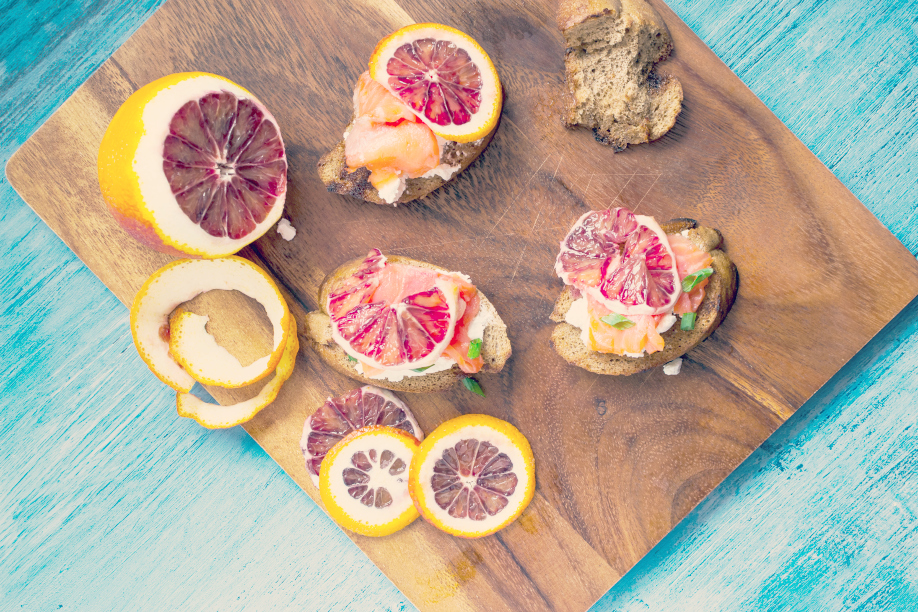Balance Your Energy Level and Your Weight by Understanding this Simple Tool
Have you ever felt like you were going to pass out if you didn’t get some food into your system immediately?
If so, you probably struggle with blood sugar dips or hypoglycemia. The symptoms are many: you could feel nauseous, irritable or even slightly dizzy. Your head feels fuzzy, it appears that your brain has ceased to function, and you may feel like you are starving – even though you’ve eaten just a few hours earlier.
Blood sugar swings can cause wild swings in your energy level, not mention propelling you to the fridge for another snack far too often.
Both of my daughters and I suffer from this syndrome, and my youngest actually begins to channel one of those roaring evil Disney queens when her blood sugar dips too low. She’s all grown up now, but I figured out early on to make sure to have snacks on hand in order to prevent an explosion.
But it turns out that all snacks are not created equal. Who knew? Obviously, a handful of almonds is healthier than a pop tart, but I’ve learned that even a few saltines can exacerbate the problem.
Balance That Blood Sugar
Everyone’s blood glucose levels dip several hours after eating, but some of us don’t handle it as well.
It was a real breakthrough for me to discover that coffee and a scone was just about the worst breakfast I could eat. The resulting blood sugar spike felt great – for about an hour. The subsequent plunge felt like an evil plot to set me up for a day of binge eating and frustration as I swung between falling asleep at my desk and reaching for another sugar boost.
I’ve learned to manage my own blood sugar levels (and taught my daughters to do so) by including protein in my meals and snacks and minimizing sugary foods.
Even so, I found that healthy-seeming foods like a piece of fruit,or a nutrition bar could catalyze that awful crash accompanied by ravenous hunger. So, I started to pay attention the Glycemic Index and to Glycemic Load.
The glycemic index is a numerical scale used to show how fast or how high specific foods will raise blood sugar levels. It basically measures how fast the foods will break down and become sugar in your bloodstream. The glycemic load measures the amounts of carbohydrates in each serving. Unfortunately, many yummy foods contain a glycemic load of more than 20 – which can cause blood sugar and insulin spikes. (Potatoes carry a whopping 36.4!)
When I began to look into this I learned that controlling blood sugar levels does more than just stabilize mood, weight, and energy level.
Why The Glycemic Index Matters
When I began to look into this I learned that controlling blood sugar levels does more than just stabilize mood, weight, and energy level. Studies are showing that it also can prevent heart disease and some cancers, help cholesterol levels, and lower your chances for insulin resistance and type-2 diabetes.
There’s a lot of information out there on the glycemic index – and as with all health information some of it is conflicting. But the consensus appears to be that foods that rate above 65-70 on the GI chart are considered high, medium GI foods rate about 56-69, and low is anything 55 and under.
The lower the rating on the glycemic index, the better the specific food for moderating blood sugar levels.
It’s surprising to see how high some “healthy” foods rate on the GI (bananas, pineapple, potatoes), and how low others are that would seem poor fit in a wellness diet (beer and wine for one). I’ll let you research the specifics on your own. You can start here or here, both of these sources include a wide variety of foods.
Not A Perfect Solution
If you delve into this at all you will discover that the ratings of foods can vary quite a bit. This does not discount the validity of the science – it just is an indication of how difficult it is to measure the sugar content of natural foods.
For example, oranges are sometimes listed as high and sometimes as moderate. This is probably due to the way the sugar content can vary depending on when a fruit was picked, where it was grown, the weather during the season, and many other factors.
Some experts recommend that folks with hypoglycemia or other blood sugar issues stick with foods with a GI of lower than 40. That might feel a bit extreme to maintain on a regular basis.
If you don’t struggle with blood sugar swings, then you probably don’t have to worry as much about the glycemic index rating of the foods you eat. Overall, no one can argue the established truth that a diet consisting of whole unprocessed foods will lead you to an overall healthier body, greater well being, and a stabilized weight.
But – if you suffer from either diabetes, pre-diabetes, or hypoglycemia with the attendant blood sugar spikes and dips, then you might want to check out the GI and GL of some common foods – and eliminate, or greatly reduce, those with a glycemic index and glycemic, while emphasizing those that have a nice low numbers.
When planning meals and snacks a good rule of thumb is to accompany a high GI food with lower GI foods (for example, add a handful of nuts or a cube of cheese to that bowl of cherries.) That way you are balancing out the overall glycemic index of the foods you are consuming in a sitting.
Bon appétit!
 Sarah Grace Powers is a certified life coach and EFT Practitioner. She is a ‘dream resuscitator’, helping clients rediscover their passions and reinvent themselves no matter what their age or circumstance. In her previous career she owned and operated an herb shop and has practiced holistic living for over three decades. Find her at sarahgracecoach.com
Sarah Grace Powers is a certified life coach and EFT Practitioner. She is a ‘dream resuscitator’, helping clients rediscover their passions and reinvent themselves no matter what their age or circumstance. In her previous career she owned and operated an herb shop and has practiced holistic living for over three decades. Find her at sarahgracecoach.com





